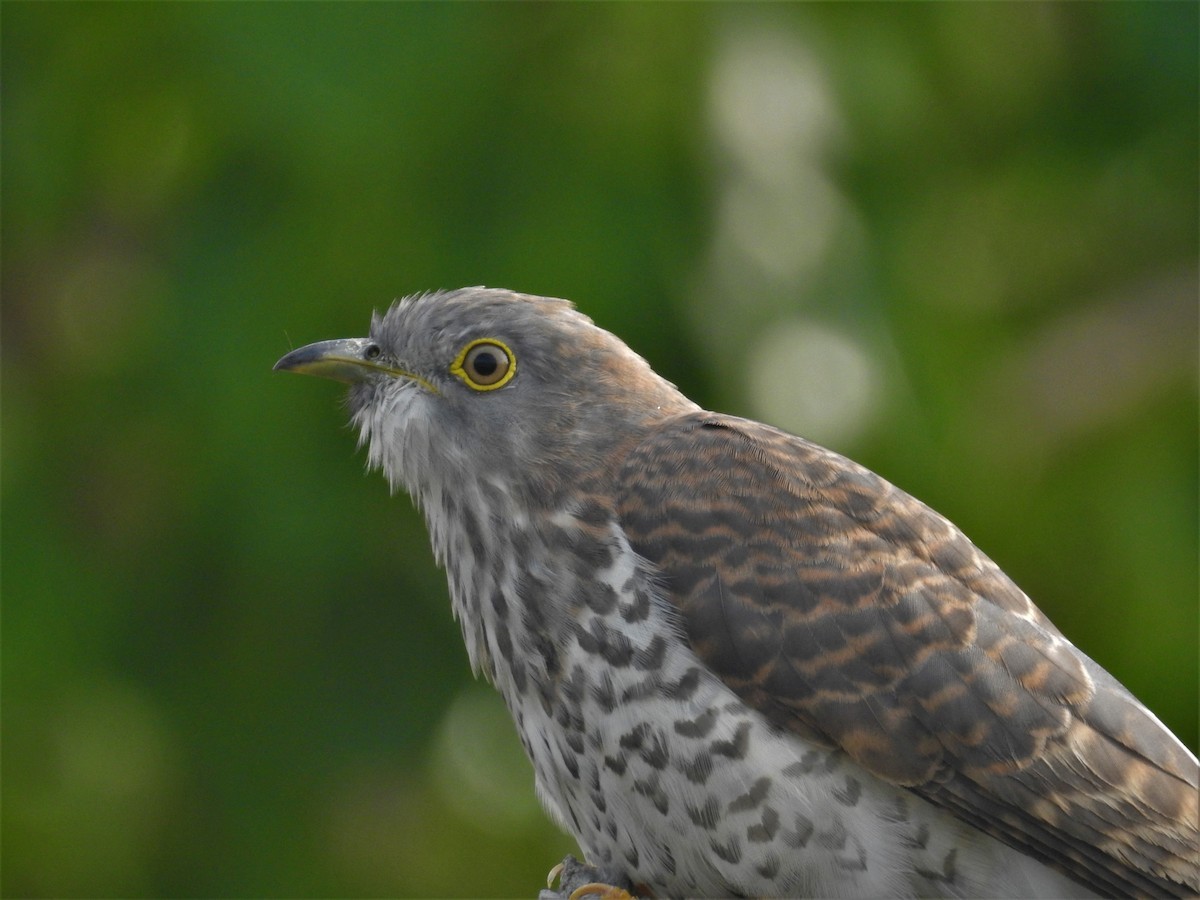Common Hawk-cuckoo
A species of Typical Cuckoos Scientific name : Hierococcyx varius Genus : Typical Cuckoos
Common Hawk-cuckoo, A species of Typical Cuckoos
Botanical name: Hierococcyx varius
Genus: Typical Cuckoos
Content
Description General Info
 Photo By Ashwin Viswanathan
Photo By Ashwin Viswanathan Description
The common hawk-cuckoo is a medium- to large-sized cuckoo, about the size of a pigeon (ca. 34 cm). The plumage is ashy grey above; whitish below, cross-barred with brown. The tail is broadly barred. The sexes are alike. They have a distinctive yellow eye ring. Subadults have the breast streaked, similar to the immature shikra, and there are large brown chevron marks on the belly. At first glance they can be mistaken for a hawk. When flying they use a flap and glide style that resembles that of sparrowhawks (especially the shikra) and flying upwards and landing on a perch they shake their tails from side to side. Many small birds and squirrels raise the alarm just as they would in the presence of a hawk. The sexes are alike but males tend to be larger. They can be confused with the large hawk-cuckoo, which, however, has dark streaks on the throat and breast. Young birds have a pale chin but young large hawk-cuckoos have a black chin. During summer months, before the monsoons, the males are easily detected by their repeated calls but can be difficult to spot. The call is a loud screaming three-note call, repeated 5 or 6 times, rising in crescendo and ending abruptly. It is heard throughout the day and frequently during moonlit nights. The calls of females are a series of grating notes. Common hawk-cuckoos feed mainly on insects and are specialised feeders that can handle hairy caterpillars. Caterpillar guts often contain toxins and like many cuckoos they remove the guts by pressing the caterpillar and rubbing it on a branch before swallowing it. The hairs are swallowed with the caterpillar and are separated in the stomach and regurgitated as a pellet. 
Size
33 cm
Nest Placement
Tree
Dite type
Carnivorous
General Info
Feeding Habits
Bird food type
Behavior
Like many other cuckoos, this species is a brood parasite, preferring babblers mainly in the genus Turdoides (possibly the only host) and also reportedly on laughing-thrushes of the genus Garrulax. Its breeding season is March to June, coinciding with that of some of the Turdoides babblers. A single egg is laid in each nest, blue, like that of the host. The hatchling usually evicts the eggs of its host and is reared to maturity by foster parents, following them for nearly a month. T C Jerdon noted that it may not always evict the host and that young birds may be seen along with young babblers. When moving with a flock of babblers the chick makes a grating kee-kee call to beg for food and the foster parents within the group may feed it. The predominant host species in India are Turdoides striatus and Turdoides affinis. Hawk-cuckoos also parasitise the large grey babbler Turdoides malcolmi. In Sri Lanka, their host is Turdoides striatus. Parasitic eye-worms in the genus Oxyspirura have been found in the orbital cavity of the species. 
Distribution Area
The common hawk-cuckoo occurs in most of the Indian subcontinent, from Pakistan in the west, across the Himalayas foothills, east to Nepal, Bhutan and Bangladesh and south into Sri Lanka. Some birds of the Indian population winter in Sri Lanka. In the hills of central Sri Lanka, ciceliae is a resident. It is generally resident but where occurring at high altitudes and in arid areas is locally migratory. It is found in the lower elevations (mostly below 1000m) of the Himalayas but in the higher areas, the large hawk-cuckoo tends to be more common. The species is arboreal and rarely descends to the ground. Its habitat includes garden land, groves of tree, deciduous and semi-evergreen forests. 

 Photo By Ashwin Viswanathan
Photo By Ashwin Viswanathan Scientific Classification
Phylum
Chordates Class
Birds Order
Cuckoos and Relatives Family
Cuckoos Genus
Typical Cuckoos Species
Common Hawk-cuckoo